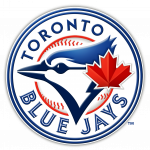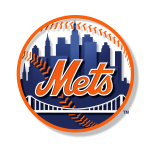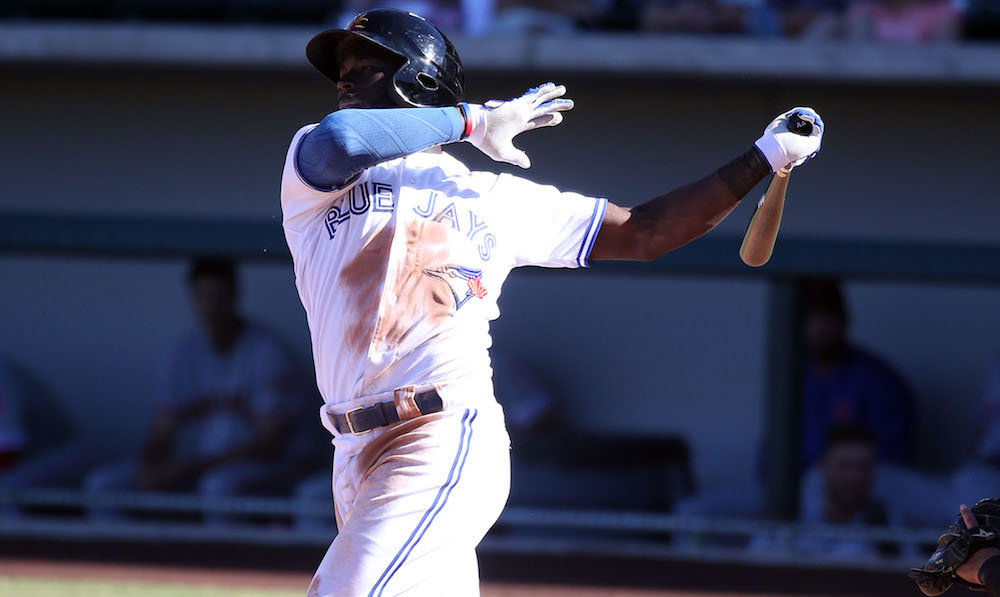Feature Photo: Anthony Alford, CF, Blue Jays
In Part Two of my time sitting on the Double-A Eastern League’s New Hampshire Fisher Cats (TOR)/Binghamton Rumble Ponies (NYM) series, I was able to take closer look at highly touted center fielder Anthony Alford from the Blue Jays as part of a fresh five-player set of reports below.
Next week I’ll be reporting in on my recent three-game view of the Scranton/Wilkes-Barre RailRiders while they were playing in Pawtucket from May 8-10, and I’ll have reports on outfielders Clint Frazier and Dustin Fowler, as well as shortstop Tyler Wade coming soon!
2080 Prospect Spotlights
New Hampshire Fisher Cats/Binghamton Rumble Ponies Series
Double-A Eastern League
May 4-7, 2017
 Anthony Alford, CF, Blue Jays (Double-A New Hampshire, Eastern League)
Anthony Alford, CF, Blue Jays (Double-A New Hampshire, Eastern League)
Ht/Wt: 6’1” / 215 lbs. B/T: R/R Age (As of April 1st, 2017): 22y, 9m
Alford projects as a Role 60, occasional All-Star-caliber center fielder for the Blue Jays with a legitimate set of five tools and plus athleticism. But the profile is of the high-risk variety given his injury history, and reaching his ceiling is almost entirely predicated on his ability to stay healthy.
Alford has a well-proportioned, strong, athletic frame. He has a slight open stance with a high hand set-up, and in this viewing he showed a less-pronounced leg kick that was evident when I last saw him last year. He’s keeping his hands and bat quiet when loading, and showing less hand-pump action. He has quick hands and wrists that generate easy-plus bat speed, and he barrels balls up with a very live bat – the ball really jumps, and the hit tool projects as plus.
He is a better hitter when looks to use the opposite field and not be so focused on pulling the ball. His combination of raw strength, the ability to loft the ball, and the leverage in his swing give him plus in-game power potential as well, with 25-plus home runs per year not out of the question at the big league level. He should also settle into above-average on-base capability as well, which is currently at .416 thus far in 2017, well up from his .344 on-base percentage at High A Dunedin last year.
In the field, he projects as a plus center fielder who should stick at the position in the big leagues so long as the health stays good. He shows above-average first-step quickness and it pairs well with plus range thanks to his plus to double-plus speed. Alford shows good defensive instincts, with good lateral quickness and good acceleration, which offsets the fringe average arm, which is enough to carry the position, but he’s not going to be racking up big assist numbers. He showed plus to double-plus speed out of the box (4.20, 4.25, 4.19 seconds from home to first base) which looks like it has decreased some due to his leg injuries, or perhaps because he’s protecting his legs early in the season (in this series, he left the May 6 game after slipping on wet turf and pulling his groin, though he’s continued to play every day since). On the basepaths, he has good instincts, and I can see 20-plus stolen-base potential.
Overall, the package is impressive, and proving his health is one of the few obstacles left on his ascension to the major leagues, as is the Jays’ current roster. With Gold-Glover Kevin Pillar currently occupying center field for the Jays, look for Alford to get some time in the corner spots this season at the Double-A and Triple-A levels, and if the athleticism plays out as expected in either spot, he’ll be in the conversation for a starting role with the big league club on Opening Day in 2018.
 Richard Urena, SS, Blue Jays (Double-A New Hampshire, Eastern League)
Richard Urena, SS, Blue Jays (Double-A New Hampshire, Eastern League)
Ht/Wt: 6’0” / 185 lbs. B/T: S/R Age (As of April 1st, 2017): 21y, 2m
The switch-hitting Urena is in his second season playing at the Double-A level, and he’s been struggling offensively for the Fisher Cats, barely hitting over the Mendoza line with a .205/.267/.280 slash line through 147 plate appearances, a far cry from his .266/.282/.395 line at the same level in 2016 (over 132 PA’s). But he is still young for the level, and there’s enough bat speed and potential to project that he’ll figure things out as the season progresses. He presently lacks quality plate discipline at this time and is prone to giving away at-bats by expanding the zone. He has only been switch-hitting for the past four years, and he shows quick, loose hands along with a quick bat, and gets the barrel out with quick wrists from both sides of the plate, but overall he looks more comfortable hitting from the left side. There’s some loft to the left-handed swing with plus raw power that projects to a future average power grade, and overall his hit tool projects as average at maturity. He’ll need to stay closed from both sides of the plate and not leak to develop a more consistent swing, and to keep the barrel in the zone for a more extended period.
His defense is currently ahead of his offense. At the six-spot, he shows quick-but-soft soft hands with good fielding actions and overall plus potential at the position. His footwork is solid, and he shows agility, with good first-step quickness and plus range who can get to the 5/6 hole and make the throws thanks to his double-plus arm strength. His throws have good carry and accuracy, and he can throw both throw on the run, and from any angle. His speed is average, and it plays better when underway, and he was slow out of the box in this view from the left side (4.34 seconds from home to first base).
Urena is starting to look fully mature physically, and he has added some extra strength since my 2016 views. While he has a ways to go with the hit tool, he still projects as an average hitter with average power, and he’ll be a plus defender at a premium position. His hit tool will be the determining factor as to his ultimate major league role. He has a ceiling of a Role 60, plus shortstop with the potential to make an All-Star team or two if the bat comes around. His floor is that of a Role 50 major-league-average regular if the hit tool doesn’t fully mature, but his realistic role is right in the middle for me – a Role 55, above-average regular player.
 Harold Ramirez, RF/LF, Blue Jays (Double-A New Hampshire, Eastern League)
Harold Ramirez, RF/LF, Blue Jays (Double-A New Hampshire, Eastern League)
Ht/Wt: 5’10” / 220 lbs. B/T: R/R Age (As of April 1st, 2017): 22y, 8m
Acquired by the Jays along with Reese McGuire as part of the deal that sent Drew Hutchinson to the Bucs on August 1, 2016, Ramirez is physically is reminiscent of Wellington Castillo (C, Orioles), with a compact, low-waisted frame with big legs and thighs, and he’s a player who is going to have to monitor his conditioning and body to stay healthy for full seasons.
At the plate, he has a line-drive oriented approach and limited loft and leverage to his swing, which adds up to both below-average power potential and a below-average hit tool. He’s hit just seven home runs at the Double-A level and is currently slashing .224/.267/.378 in his second season at the level. He’s a gap-to-gap hitter who hits from a wide base and a short unload with an upright bat. He is slow to get the swing started and the bat speed isn’t anything special, and doesn’t get the barrel out front well, making him more of a middle- and away-type hitter. He’s a dead-red hitter and his low on-base percentage and below-average plate discipline are preventing him from working deep into counts and getting the OBP to a respectable level, and at this stage of his career there’s no sign that his approach is going to change. He is presently a below-average runner whose speed plays better underway, but he’s still shy of a 50-grade run tool, potential potentially as a result of past leg issues and injuries.
Defensively, his fringe-average arm is best suited for left field, and it lacks the strength and accuracy to be able to hold down the other corner-outfield spot. He displays average fielding actions and will make the plays on those that he can get to, but the range is fringy at best. Without a standout carrying tool to strengthen the profile as a major league player, Ramirez will be Role 30 player who tops out at the Triple-A level.
 Ryan McBroom, 1B, Blue Jays (Double-A New Hampshire, Eastern League)
Ryan McBroom, 1B, Blue Jays (Double-A New Hampshire, Eastern League)
Ht/Wt: 6’3” / 230 lbs. B/T: R/L Age (As of April 1st, 2017): 25y, 2m
McBroom brings double-plus raw power to the table, and with enough at-bats it could project to average in-game power. He’s got above-average bat speed, with a long swing with some bar out action, though he’ll get extended at times. His swing appears grooved at this point, and he needs to make better adjustments versus secondary offerings to be more effective; otherwise he has a dead-red profile with high strikeout rate of 23% rate this year, though he is finding his way into more walks, leading to an almost-100-point delta between his average (.225) and his OBP (.324) this season, the OBP of which is consistent with his 2016 OBP of .323, but still below average. Overall, he projects as a below-average hitter.
On defense, he is limited to first base, with fringe-average hands that can catch the balls he gets too, but with below average footwork and range, and limited agility around the bag. He is a labouring runner, with well-below-average home-to-first times (4.75-to-4.89 seconds), and he can be a baseclogger trying to score from first on a double – he’s really a base-to-base guy. Power is his carrying tool, and he reminds me of a right-handed version of former Blue Jay Kevin Barker (1B/PH) offensively, while Barker was with the Jays in 2006. McBroom projects as a Role 35 up/down first baseman, capable of emergency duty at the big league level, but otherwise limited to a regular role at the Triple-A level.
 Tomas Nido, C/DH, Mets (Double-A Binghamton, Eastern League)
Tomas Nido, C/DH, Mets (Double-A Binghamton, Eastern League)
Ht/Wt: 6’0” / 210 lbs. B/T: R/R Age (As of April 1st, 2017): 23y, 1m
I only had a limited defensive look at Nido from behind the plate, as he caught only one game and DH’d in the other three of this series, going 5-for-13 overall. Nido ‘s bat is upright with a wrap, and he likes the ball middle-in and leaks on his front side, and he has exploitable holes on the outer half of the plate. Nido has a long swing with some bar out action, but is still able to make consistent contact. He rarely walks (just six in 104 plate appearances to-date, compared to a 4% rate in a full season at High A in 2016) and doesn’t strike often (13% this year, in-line with an 11% rate in 2016) and possesses a well-below-average on-base percentage of .269 this year to go with a .224 batting average. Has some strength and leverage to his swing and shows plus raw power but it has not translated into useable game power at any level he’s played as a pro. He is more of a gap-to-gap singles and doubles hitter, and the hit tool, all-in, is below average.
His average arm strength was only viewed in infield work during the series so I have no in-game assessment. He has a quiet glove and receiving actions behind the plate, and he appears to frame well and call a good game. His hands, footwork, and agility would all grade out as average. While he could have some value as a Role 30 Emergency call-up in the big leagues, he doesn’t have the tools on defense to play beyond spot duty, nor is their enough offensive value as a designated hitter to sustain a more regular spot on a 25-man roster.
 Luis Guillorme SS/2B, Mets (Double-A Binghamton, Eastern League)
Luis Guillorme SS/2B, Mets (Double-A Binghamton, Eastern League)
Ht/Wt: 5’9” / 190 lbs. B/T: L/R Age (As of April 1st, 2017): 22y, 7m
Guillorme is a non-flashy, steady defensive player with overall average-graded defensive tools with solid first-step quickness and range. He is spending his time in Binghamton equally at second base and shortstop, and playing each position effectively, with just three errors, all at shortstop, in 144 chances to-date. He shows overall average footwork, agility, and actions from either side of second base, and can make all the all the plays. He has soft hands with good fielding actions and overall average fielding ability. His arm is also average, showing quick arm speed, with a good unload, and also with the ability to throw from angles with good carry and accuracy.
Offensively, Guillorme is more of a singles- and doubles-type hitter, with just six of his 39 hits going for doubles, though he is sporting a .320 batting average and .382 on-base percentage over his first 137 plate appearances, which are nice improvements over his 2016 High A numbers of .263/.332.
He looks for the fastball and looks to cheat to the pitch, and gears up to pull most everything, though with limited leverage and lift to his swing, the game power simply is absent the profile. He’s shown he can work the count, and he has a dead start hitting approach, getting the barrel out front and generating line drives regularly. He needs to learn to go the other way more often, and there is no power potential in the profile to speak of, so the hit tool, overall, projects as below average.
His run times of 4.36-to-4.48 seconds from home to first are below average to well-below average, though he does run better once underway. Guillorme has enough defensive ability up the middle to have a ceiling as a light Role 40 utility infielder, but there’s not enough in the offensive profile to be much more than a defensive-minded utility player at the major league level.


